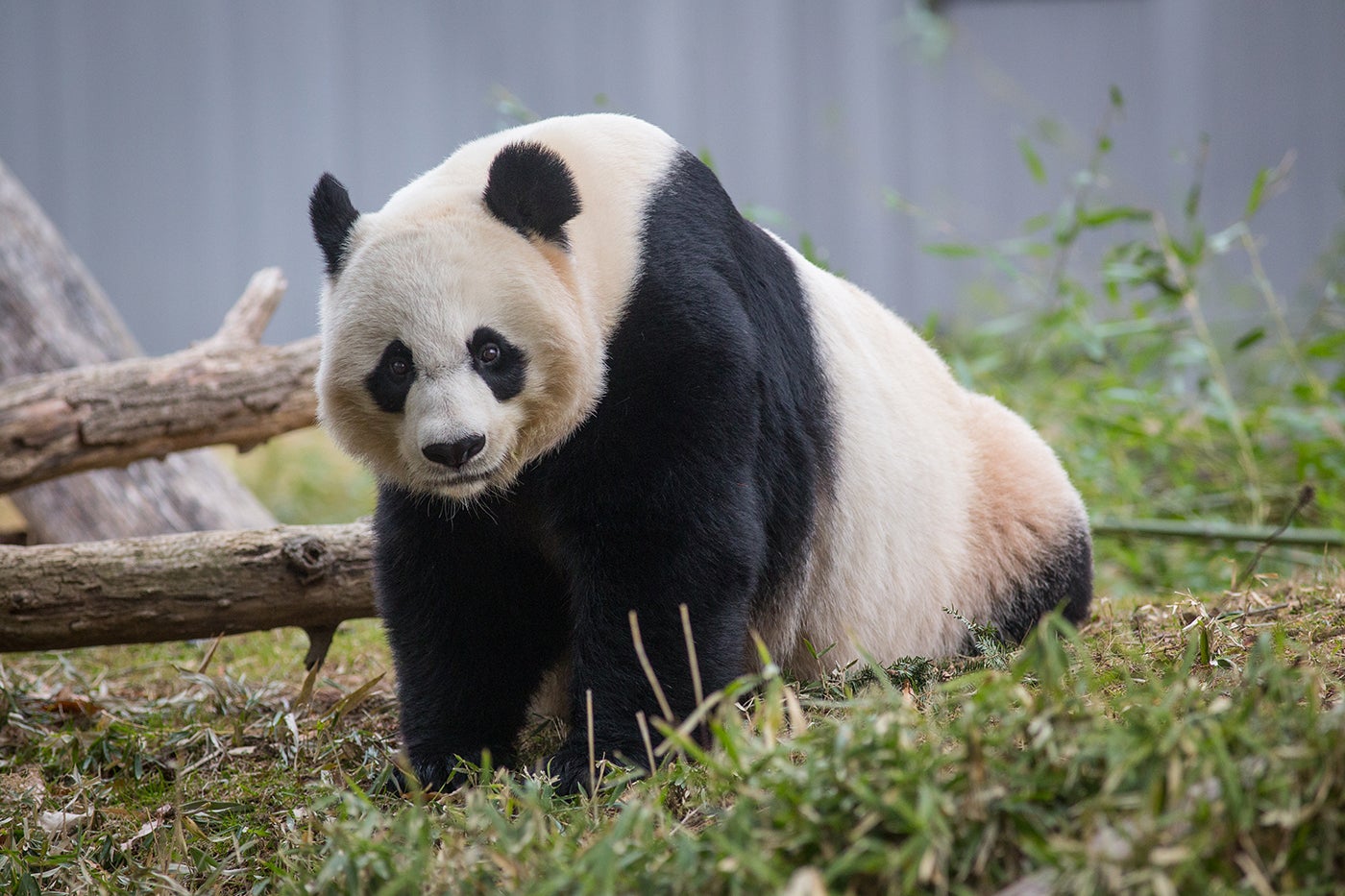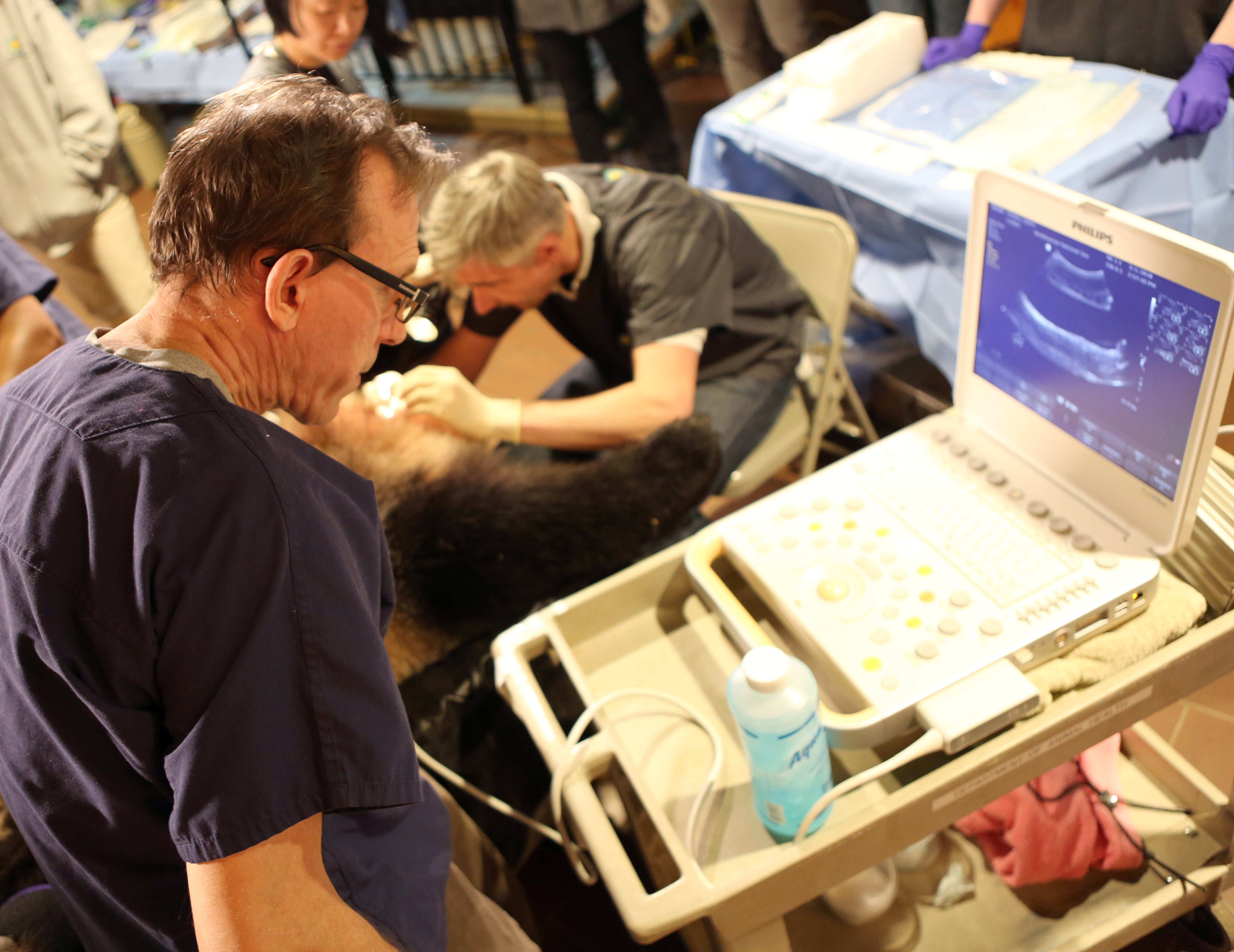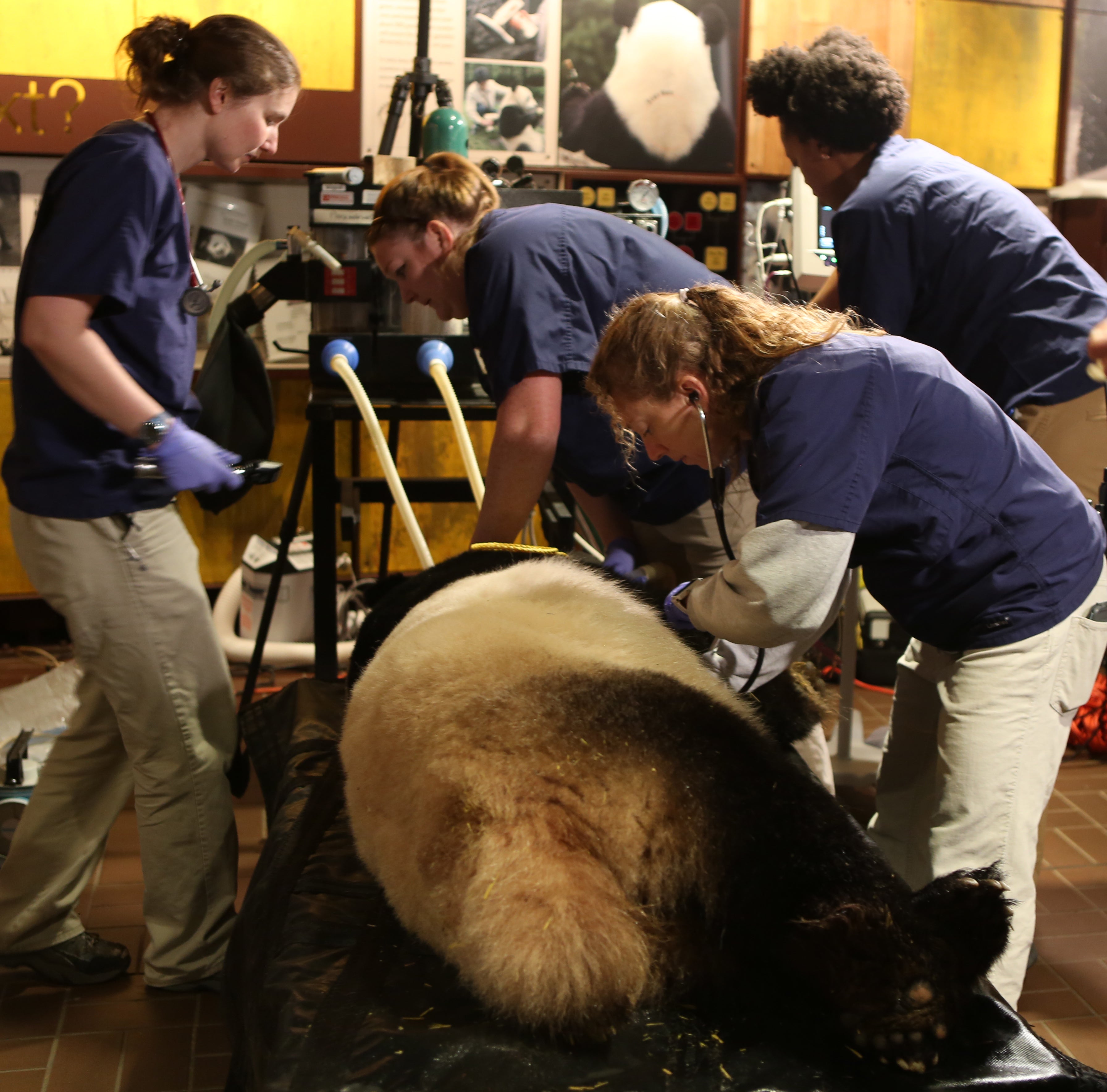Giant Panda Mei Xiang is Artificially Inseminated at the Smithsonian’s National Zoo
Note: The Zoo’s giant panda team will be available for on-site interviews March 2 at 9:30 a.m. To RSVP, email murphyd@si.edu or zoonj@si.edu or call the Communications office beginning at 8 a.m. tomorrow.
A team of reproductive scientists, veterinarians and panda keepers at the Smithsonian’s National Zoo and Conservation Biology Institute performed an artificial insemination on giant panda Mei Xiang (may-SHONG) today, March. 1. The procedure started at 3 p.m. Scientists and keepers had been closely monitoring Mei Xiang’s behavior and hormones since she began displaying behavioral changes Feb. 17, indicating she was almost ready to breed. Daily hormone reports showed Mei Xiang’s estrogen levels peaked Feb. 28, which means she was ovulating and able to become pregnant. Female giant pandas are only in estrus or able to become pregnant, for 24 to 72 hours each year.
“Successful conservation requires cooperation and the expertise of our animal keepers, veterinarians and scientists. Our team worked seamlessly to give Mei Xiang and Tian Tian the best chance to contribute to their species’ survival,” said Steve Monfort, Acting Director of Smithsonian's National Zoo and John and Adrienne Mars Director, Smithsonian Conservation Biology Institute. “Over the next few months, the team will continue to monitor her closely. Hopefully, we will have a healthy cub and celebrate another conservation success for the Zoo and this vulnerable species.
”During the past week, Mei Xiang has become increasingly restless, wandering her yard, scent-marking and vocalizing—all behaviors that increase in intensity before she reaches peak estrus. Tian Tian (tee-YEN tee-YEN) immediately noticed the hormonal changes in Mei Xiang and began displaying behaviors toward her indicating that he was ready to breed as well. Keepers closely monitored Mei Xiang and Tian Tian for any affiliative behaviors that would signal they were both interested in breeding.
Since the window when a giant panda can conceive a cub is so short, the Zoo’s panda team immediately moved to perform an artificial insemination on Mei Xiang. They artificially inseminated her using fresh and frozen semen from Tian Tian for the procedures.
The panda team will not know if the artificial inseminations were successful for several months. Giant panda pregnancies and pseudopregnancies generally last between three and six months. Zoo veterinarians will conduct ultrasounds to track changes in Mei Xiang’s reproductive tract and determine if she is pregnant during the next several months. Scientists will also monitor her hormones to determine when she is near the end of a pseudopregnancy or pregnancy. There is no way to determine if a female is pregnant from hormone analysis and behavior alone. Mei Xiang’s hormones and behavior will mimic a pregnancy even if she is pseudopregnant. The only definitive way to determine if she is pregnant is to see a developing fetus on an ultrasound.
The Zoo received approval for its breeding plans from the China Wildlife and Conservation Association and the U.S. Fish and Wildlife Service, which monitors giant panda research programs in the United States.
Giant pandas are listed as “vulnerable” in the wild by the International Union for Conservation of Nature. There are an estimated 1,800 in the wild. Scientists and animal care specialists at the Smithsonian’s National Zoo and Conservation Biology Institute work with scientists in China studying giant panda reproduction and cub health, habitat and disease.
The Zoo will continue to provide updates on the pandas on Facebook, Instagram and Twitter using #PandaStory, and the Giant Panda e-newsletter.
For more information on giant pandas and artificial insemination, please see the Panda Estrus FAQs, Giant Panda FAQs and the Zoo's giant panda page.
###
Caption 1: Giant panda Mei Xiang at the Smithsonian’s National Zoo. Photo: Skip Brown, Smithsonian’s National Zoo
Caption 2: Veterinarian Dr. Don Neiffer looks at an ultrasound as Research Biologist Dr. Pierre Comizzoli artificially inseminates giant panda Mei Xiang. Photo: Amy Enchelmeyer, Smithsonian's National Zoo
Caption 3: Veterinarians Dr. Kendra Bauer and Dr. Jessica Siegal-Willott attend to giant panda Mei Xiang sedated for artificial insemination. Photo: Amy Enchelmeyer, Smithsonian's National Zoo
Related Species:
Image Gallery








